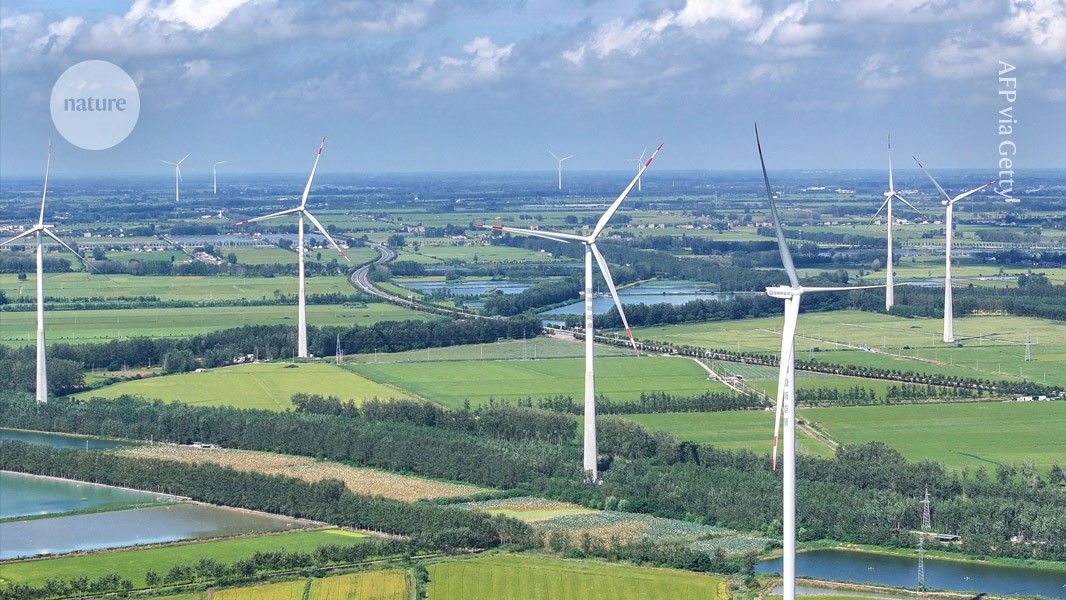
Credit: AFP via Getty
China has announced its ambitious plan to cut greenhouse gas (GHG) emissions, offering insight into potential shifts in global emissions over the coming decade. During a video speech at the United Nations Climate Summit on September 24, President Xi Jinping revealed that China aims to reduce GHG emissions by 7% to 10% from peak levels by 2035.
The rate at which China decreases emissions will significantly influence global trends. Since 2015, the country has been responsible for 90% of the increase in the world’s CO2 emissions and currently ranks as the largest emitter, accounting for about one-third of the global total, according to the Asia Society Policy Institute, a New York-based think tank. Analysts caution that China’s actions could critically affect the success of the 2015 Paris Agreement.
In 2020, Xi committed to having China’s CO2 emissions peak before 2030 and achieving carbon neutrality by 2060. Some experts believe that these emissions may peak sooner than expected.
The new emission targets are part of China’s updated Nationally Determined Contribution (NDC), a climate action plan that countries under the Paris Agreement must submit to the UN every five years. China also outlined its clean energy objectives for 2035 in this plan.
The significance of this NDC lies in its targets extending to 2035, beyond the anticipated emissions peak. Yao Zhe, a Beijing-based researcher on China’s climate policy at Greenpeace East Asia, states, “This is the first time China has officially articulated its post-peaking plan.”
Experts, like Belinda Schäpe from the Centre for Research on Energy and Clean Air (CREA) in Helsinki, assert that once China’s emissions start to decline, global emissions will likely follow suit. “These targets are crucial for the global community, as they offer clarity on the potential trajectory of emissions worldwide,” she explains.
This marks the first time China has set targets not just for CO2 but for all GHGs, including methane and nitrous oxide, according to Zhang Da, a researcher at Tsinghua University in Beijing.
Are the Targets Ambitious Enough?
Some experts argue that China’s emissions reduction target is not sufficient to meet the Paris Agreement’s goal of keeping global warming well below 2 °C above pre-industrial levels, and ideally below 1.5 °C.
“Reducing emissions by anything less than 20% is not aligned with a 2-degree target. Similarly, under 30% isn’t in line with a 1.5-degree target,” says Lauri Myllyvirta, an analyst who has studied China’s emissions trends for over a decade and is a co-founder of CREA. He references climate scenarios from the Intergovernmental Panel on Climate Change to illustrate his point.
How China has framed its emissions cuts — as 7–10% of an unspecified peak level — allows for potential short-term increases, Myllyvirta notes. He emphasizes that what matters for climate change is the total GHGs released into the atmosphere over time, making early significant reductions critical.
However, others, like Zhang Da, view this target as a meaningful advancement. “Cutting non-CO2 emissions is often more complex than handling CO2 emissions,” he explains. “A 7–10% reduction in net GHG emissions from peak levels generally indicates a significant reduction in CO2 levels.”
A study by Da and colleagues published in January found that if China reduces its energy-related CO2 emissions by 10–12% from peak levels by 2035, it would align with its goal of achieving carbon neutrality before 2060. Another study co-authored by Da suggests that the two-degree temperature target is attainable within China’s carbon-neutral timeline.
Summary:
China has set a goal to reduce greenhouse gas emissions by 7% to 10% from peak levels by 2035, a move that could greatly impact global emission trends. While some analysts believe this target is insufficient to meet climate goals, others see it as a step forward, covering not only carbon dioxide but all greenhouse gases. The extent of China’s emissions cuts will significantly influence the global climate landscape moving forward.





